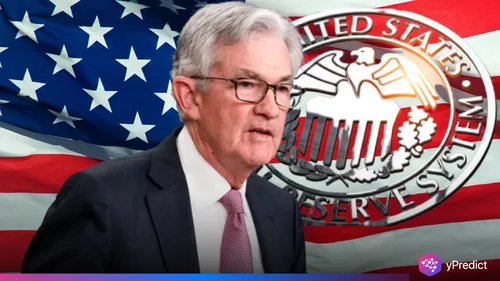
Bank of America (BofA), Citi, and Goldman Sachs have updated their projections for the Bank of England’s (BoE) rate path. The BofA rates outlook predicts a slower rate of policy easing and does not include a rate cut in September. Additionally, BofA cites volatile UK inflation and strong wage data as reasons for dropping its earlier call. The bank will experience two additional cuts in August and November 2025. Additionally, the final cut is planned for February 2026. This shift thus reflects its cautious approach to growth, inflation, and BoE policy.
Rate Cuts Slow Down in BofA Rates Outlook
BofA cited recent changes to payroll data as a major contributing factor. Furthermore, it stated that continued high wage growth indicates that the labor market is not rapidly deteriorating. Growth and job conditions have improved, but they are not strong enough to support quick easing. Therefore, the change in BoE policy demonstrates the growing significance of data-driven central bank choices, particularly in unpredictable economic times.
Growing inflation is still a major worry. BofA increased its 2025 UK inflation forecast from 3.1% to 3.2%. It now projects that inflation will peak in September at 3.7%. The UK will have a gradual return to its target inflation rate, in contrast to the Eurozone, where it is rapidly decreasing. Furthermore, BofA states that this “grind” calls for a more cautious easing path.
Furthermore, BofA has shifted to a neutral position on the November MPC-dated Sonia. This implies that the current levels present little room for expansion. Currently, strategists prefer positioning around the 1-year RPI over the 2-year RPI because of the uncertainty surrounding inflation in the near future. Thus, changing BoE policy continues to influence investor tactics in the rates market.
BofA Rates Outlook Ends With Cautious Call
The BofA Rates Outlook suggests caution, even though the market as a whole anticipates the BoE to start lowering rates soon. The UK’s volatile inflation rate and inconsistent labor data suggest a more measured approach. BofA’s decision to postpone the next action until February 2026 highlights how inflation dynamics still shape policy decisions. Additionally, investors now anticipate fewer, more dispersed cuts in the future. Future BoE policy may be more significantly influenced by the pace of the UK’s inflation decline.







